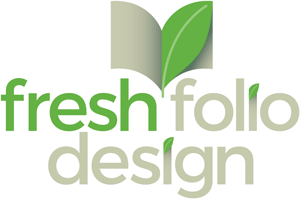There is no shortage of poorly designed materials in the world. We’ve all seen crummy brochures, clunky websites, and cheap logos.
However, good design is not something that is only available to those willing to sojourn to Makku Picchu where a wizened shaman will impart the secrets of design. So what’s the deal?
I have determined there are 3 categories of people. Designers, Solid Non-Designers, Struggling Non-Designers.
Designers are people that have pursued teaching and training in design. They’ve spent countless hours learning about color, layout, hierarchy and other elements of design giving them a wide understanding of their options in solving problems with solid visual solutions.
Solid Non-Designers are people who never pursued any formal training, but inherently have a strong visual sense. They may not even know why something works, they just know it when they see it. These people are similar to the musical prodigy pounding out Mozart sonatas on the piano after hearing them once. And yes, I know you don’t “pound” out Mozart; you tinkle.
To be clear, there are very successful Solid Non-Designers in the world. There are many blogs I follow of people who have a beautiful website and exemplary materials, but they specifically talk about not having gone to school to learn about design. (it’s ok to be sort of annoyed at those people)
Lastly, there are Struggling Non-Designers. This is the group that doesn’t have any training, but find themselves in the position of needing to create materials for their work or maybe a personal project they are working on.
It is this group that I have in mind for today’s post. These people are doing what they can, but are unknowingly making mistakes and their projects are suffering as a result.
I’m sure I won’t address every issue you face, but hopefully what I do share will give a better foundation for you to grow in confidence with your projects.
Too Many Fonts
I love fonts. I can geek out for hours looking at different fonts and seeing how the letterforms look together.
Most software packages come with a huge list of font options, and then there are sites offering free fonts to download. So, I completely understand how selecting fonts can feel a bit like being a kid in a candy shop. There’s just so many to choose from!
However, when it comes to fonts we definitely want to keep a “less is more” approach.
A good rule of thumb is to use 2–3 fonts, and to have specific choices behind the fonts you choose.
For example, I will usually start with 2 fonts; one for body copy, one for headlines. Most times, one font is serif, the other is sans serif. You can interchange which you choose for a body font and which you choose for a headline.

SIDENOTE: Serif fonts are the ones that have a small line attached to the end of a stroke, Sans serif fonts, from the French sans meaning “without” do not have the stroke. (Those French have a different word for everything.)
The contrast created in using a serif and a sans serif font is usually a good start. Additionally, most fonts have different weights within the typeface which will give options for any variation you may need in your materials, yet still retaining a harmonious look to the fonts being used throughout the design.
Lack of Negative Space
This can be a tough one. Negative space, or white space, is the part of the layout where there is nothing; no picture, graphic or type.
When first looking at this topic, it can be tempting to think that white space is a missed opportunity. Why wouldn’t I want to maximize the use of every square inch on the page?
The reason for negative space is when you cram too much on a page it overwhelms the reader and can ultimately compromise your message.
Think about it like being at a party. Imagine walking into the room that is packed with people. You can hardly even move because there are so many people. (To any introverts out there, keep breathing, it’s just an example.)
Now imagine a party where there are people (whatever number you are comfortable with) in a room, but there is still space to move around.
In fact, you can see the whole space and are able to make intentional choices about who to pursue conversation with, or simply sit back and enjoy the ambiance of being at a party.

You want your layout to be like the second example. Someone can enjoy the content, yet still navigate through your layout clearly to find what they came there for.
The best tip for negative space is to be intentional in how you use it. Don’t treat it like an afterthought.
Studies have shown that negative space can increase comprehension by 20%. It gives the reader space to process what you are seeing and prioritizes certain content. Look at the difference between these two examples.
The next time you are designing be sure to include negative space to your page. It doesn’t have to be a huge amount, but be intentional of creating visual rest for the eyes.
Chances are when you first start working with negative space you will start small, but the more comfortable you get you will see the value and use it more confidently.
Forgetting Your Audience
This mistake happens when you are designing with elements that appeal to your own tastes rather than keeping in mind the audience your materials is intended for.
Truth be told, designers can be guilty of this as well. We can get caught up in a particular design trend or allow our preferences to dictate the decisions we make on a design.
The way to avoid this mistake is to do the work of identifying, and keeping at the forefront of your mind, the purpose of a project. Take time to ask questions and make sure you understand the problem(s) you are trying to solve and what goal(s) you are trying to accomplish.
If you aren’t sure what kind of questions to ask, take a look at the questionnaire that we use for vetting a new project. This isn’t an exhaustive questionnaire, but it’s usually enough to start the ball rolling to make sure that you have a clear picture of a project.
Once you understand what you are trying to accomplish and who the audience is, use that information to inform the decisions that you make for your design.
That’s why it’s so important to understand your audience and what speaks to them. If you have access to speak with your audience directly, then by all means do so.
The more you know about who they are and what they like, the more you can use that information to your advantage when designing.
Conclusion
If you keep those three mistakes in mind and apply our suggested solutions to your next project you will be well on your way to growing in confidence and stepping up the quality of your materials.
If there are other pitfalls you have heard of or if this topic has you thinking about other concepts that you struggle with please leave a comment below. We love to tailor our message to what our audience is struggling with to make sure that we bring the maximum amount of value.



Leave a Reply